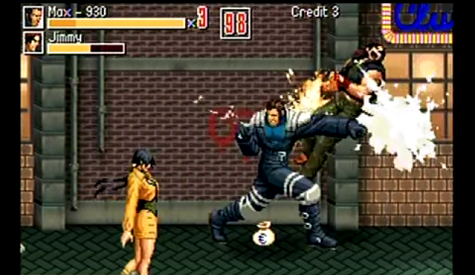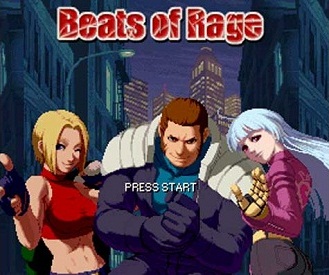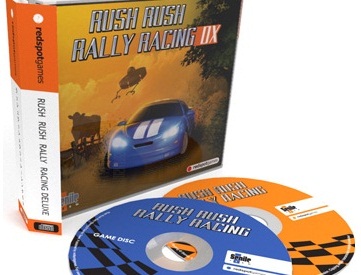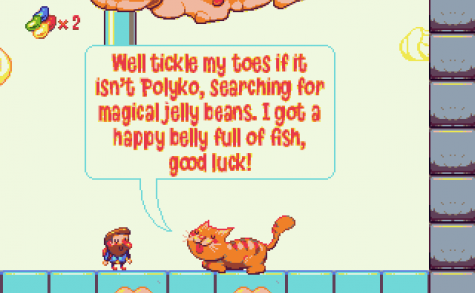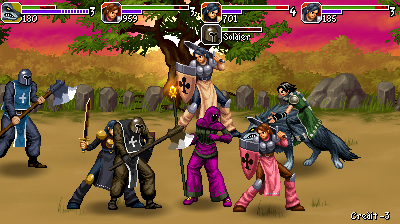Although the Dreamcast met its premature demise in the Western world only a few years after its release, the console’s more technically gifted fans have kept the dream alive through a vast, underground homebrew scene. The success and longevity of Dreamcast homebrew is at least in part attributed in some part to the efforts of the Dutch-based Senile Team. From 2003’s Streets of Rage inspired Beats of Rage to the retail release of 2009’s Rush Rush Rally Racing, their ambition to keep alive the spirit of retro gaming is shown in the quality of their work.
As part of the Sega-Addicts Dreamcast month, I picked the brains of Senile Team’s Roel and Jeroen van Mastbergen to get a better idea on what making a Dreamcast game in 2012 really entails. Check out their insightful tales of the world of Dreamcast homebrew after the jump.
Tell us a little about the origins of the team and your initial conception of Senile Team’s first major release, Beats of Rage.
JEROEN:
The origins of Senile Team are quite simple, because it started with three brothers. So we already sort of knew each other 😉 Once upon a time Roel said:“Nobody is making a good 2D beat ’em up anymore, and we can wait until the end of time for ‘Streets of Rage 4′, so why don’t we make a beat ’em up?”.
So we did 🙂 We called the game Beats of Rage, as a tribute to Streets of Rage, and we borrowed character sprites from the King of Fighters series. We simply released it as a DOS game for PC and threw it on our own website. Somehow people still managed to find the game, and liked it. But Beats of Rage became ridiculously popular after it was ported to the Dreamcast and PS2 by Neill Corlett. After this we decided to make more games; especially for the most popular platform: the Dreamcast.
What do you think draws indie developers to the Dreamcast as a development platform?
ROEL:
It’s a powerful enough system for most indie games, it has a fairly loyal fan base and it requires only minimal investments to start developing for it. Also, you don’t have to deal with paperwork and fees from the console manufacturer or parasites like the various age ratings bureaus.
How easy is the Dreamcast to work with and would you suggest it as a testing platform for other budding game developers?
ROEL:
How easy it is depends on what you’re used to, but in my experience it’s a pretty straightforward process once you’ve got you development environment set up.For the sake of the Dreamcast community I wish I could say everyone should start developing Dreamcast games, but that’s just not true. Developers who are only just getting started are probably much better off spending their precious time getting familiar with a more recent system.
Rush Rush Rally Racing in particular drew a lot of attention for being a full retail Dreamcast release in 2009. How did that come about and was the process of releasing a physical version easier/ harder that you anticipated?
ROEL:
Initially Rush Rush Rally Racing wasn’t meant to be a retail release at all. We started the project as an entry for a game programming competition, and it was supposed to have only a single car and 3 small levels. Unfortunately the competition’s main sponsor, Lik-Sang, went out of business and it was cancelled.By that time we had already made a lot of progress with our game, so it seemed a waste not to complete it. We decided to add more cars, levels and other features to make the game fit for publishing. That turned out to be a lot harder than expected, though. Unexpected changes in some of our team members’ personal lives, as well as other problems, caused the project to suffer lengthy delays.
At least we did get one lucky break when the game was released around the same time as the Dreamcast’s tenth anniversary. And despite the difficult development process, we received a lot of positive feedback on the final product.
Your most recent release, Polyko’s Super Jelly Bean Quest in the Sketchbook of Illusion was originally developed by HotPengu. What’s the story behind Senile Team bringing it to the Dreamcast?
ROEL:
It’s no epic tale, really. I noticed the Polyko Flash game while browsing the Pixelation forums. I thought it was very charming and decided to contact its creator. It turned out he was a Dreamcast owner and a Beats of Rage enthusiast, so the decision to work together and bring Polyko to the Dreamcast was quickly made.
Were there any difficulties in the conversion of Polyko from web-based game to Dreamcast game?
ROEL:
Indeed there were. In the Flash version the entire level was basically a large image, whose contents were loosely based on a 24×24 grid. This pretty much ruled out the possibility of a direct port. So for the Dreamcast version, Polyko‘s single level was rebuilt using 16×16 tiles.The code wasn’t ported from the Flash version either. It’s a different platform engine which was configured to act similar to the original.
Still, bringing Polyko to the Dreamcast was only a matter of days thanks to the code and tools from our previous projects.
Do you think the game benefits from being on the Dreamcast?
ROEL:
Sure. The frame rate is better, you can use a control pad and several tweaks were done to improve the experience even more.Do you intend to work with HotPengu again in the future?
ROEL:
Yes we do. Following the pleasant co-operation between HotPengu and Senile Team, and the positive feedback to Polyko, we started discussing the possibility of a new project. But we’re still working out the details.
Maybe this is a silly question, but download size of Polyko is a mere 13MB, but once uncompressed the disc image size is over 700MB, why is this?
ROEL:
The actual data (the game plus images for printable labels) is only about 13 MB. However, the disc image also contains a large dummy file. This file is never read, it only serves to “push” the game data to the edge of the disc. This helps reduce load times because the Dreamcast reads data from the edge of a disc faster than from the center. This is caused by the simple fact that the circumference of the edge is about 3 times larger than the circumference of the center.
The homebrew Dreamcast scene is nothing short of amazing. What do you consider to be the real milestones in Dreamcast homebrew?
JEROEN:
Although emulators are always fun, they appear on every platform, so I have not included them in my answer.Feet of Fury was the first real independent game to be released. So this was definitely a milestone.
Beats of Rage (BOR) was also a milestone because we released the source code, but more importantly we released the tools and instructions on how to make your own BOR mod. Surprisingly, many BOR mods were made, so this meant that many new games were released for Dreamcast. From this people also started to expand BOR, which turned into OpenBOR. This made it possible to have even more options and diverse mods.
Also, I think NG:DEV.TEAM is a milestone in itself. They keep releasing games for the Dreamcast, and they keep getting better with each release.
Is there still untapped potential in the Dreamcast? Is there anything in particular that you would like to see done with it?
ROEL:
I believe there is. It should be possible to get around many of the Dreamcast’s apparent limits with clever programming. But rather than technical showcases, I’d just like to see more good games.
Here’s a stinker: Your top three most influential retail Dreamcast games?
JEROEN:
Influential is a wide concept. So I’ll just stick to the games I still remember fondly and have had the most influence on us.Jet Set Radio: Awesome game with an awesome soundtrack. Even though it’s not the type of music I usually listen to, it fits the game so well that it just blends together and gets you pumped up to play it again and again.
Head Hunter: A very fun game that did cut scenes just right: Short, advancing the plot, and funny. And I still think every game should have a level where you have to ride a motorbike as fast as possible.
Ikaruga: A beautiful game, with interesting gameplay, while using a bare minimum of textures and additional graphics. A wonder of engineering.
Those who already follow you will have me hanged, drawn and quartered me if I don’t ask about Age of the Beast. Can you give any comments on its progress?
ROEL:
We are currently looking into some new technology and the possible expansion of our team. Depending on how that goes we will revise the game design and then reboot the project.Are there any other projects in the works? Anything for our readers to keep an eye out for?
JEROEN:
Senile Team is indeed working on a new game for the Dreamcast. We will release more information when the game is nearer to completion.
Where should our readers look for more information on Senile Team news?
ROEL:
We have a website (www.senileteam.com) with an RSS feed and a newsletter. We send out a newsletter whenever we have a new release to announce.
I’d like to thank Roel and Jeroen for their time and ask that any of you who are even remotely interested in playing something new and interesting on your Dreamcast check out Senile Team’s website for more information.

